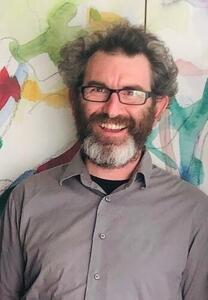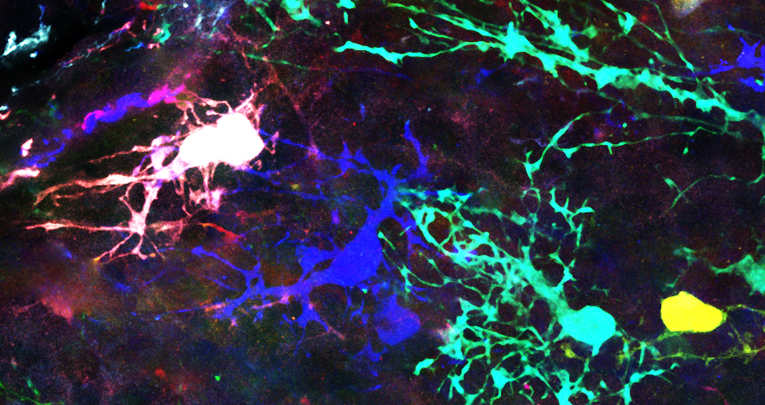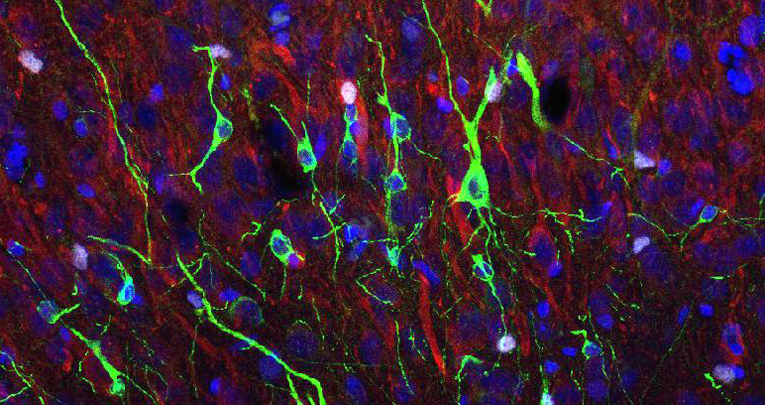Group leader: Luca Bonfanti and Paolo Peretto


Federico Luzzati
Contacts:
Tel + 39 11 6706605
e-mail:
federico.luzzati@unito.it
Education
2022 - Associate Professor of Comparative Anatomy and Cytology
2018 - National Academic Qualification as Associate Professor (Abilitazionescientificanazionale, II fascia) in Comparative Anatomy and Cytology (05/B2).
2016 - Visiting scientist in Neurology at Johns Hopkins University (Baltimore) hosted by Honjung Song lab to performed single cell RNAseq of neurogenic striatal astrocytes and their progeny.
2011 – Researcher at the Departmenet of Life sciences and systems Biology, University of Turin, Italy
2007-2011: Post-doctoral scholarship coordinated by Prof. Paolo Peretto in the laboratory of Prof. Aldo Fasolo at the Department of Human and Animal Biology, University of Turin, Italy.
2002-2006 - Ph.D. in Neuroscience (Excellent). Coordinated by Prof. Aldo Fasolo and Prof. Paolo Peretto, University of Turin (Italy).
2001 - Masters Degree in Biological Sciences (110/110 e lode). University of Turin (Italy).
Research experience
I grew up at the laboratory of Aldo Fasolo under the supervision of Prof. Paol oPeretto were I performed my master thesis, PhD and PostDoc. Since the beginning of my career I worked on the neurogenic potential of the adult brain and I developed an original research line on parenchymal neurogenesis in different mammalian species in both physiological and pathological conditions. This comparative approach allowed the unique opportunity to identify common and specific features of striatal neurogenesis in different animalmodels. During my master thesis we discovered that from the rabbit SVZ newborn neuroblastsneuroblastsmigrate towards the neocortex (Luzzati et al. 2003, PNAS; Luzzati et al. 2006 J. Neurosci) supporting the idea that the neurogenic potential of the adult brain may extendbeyond the olfactory bulb and dentate gyrus.
During my PhD I could further strengthen this concept by demonstrating that new neurons are constitutively generated in the adult rabbit striatum, challenging the classic view that the mature brain parenchyma was not permissive for the neuronal progenitor activity (Luzzati et al., 2006, J. Neurosci. 26, 609-621).
During my subsequent career as a Post-Doc and than as an assistant professor at the University of Turin, we could show that local neuronal genesis also occurred in the striatum of guinea pigs (Luzzati et al. 2014) and of mice models of both acute and progressive striatal degeneration (Luzzati et al. 2011; Nato et al. 2015). In the normal guinea pig and lesioned mice striatum, we could further demonstrate that these neurogenic processes rely on the reawakening of a latent neurogenic potential in striatal astrocytes.Thus, unlike in the SVZ and DG, some astrocytes can express their neurogenic competence only under specific conditions.
We are now currently investigating the intrinsic and extrinsic mechanisms regulating neurogenic potential in parenchymal astrocytes as well as the fate and role of their neuronal progeny. In parallel, during my PostDoc I Identifiied of a conserved neuronal type in different pallial derivatives of reptiles and mammals. Based on the distribution of these cells, analyses of gene expression and neuroanatomical considerations I proposed that the upper layers of the neocortex evolved through the co-option of the olfactory cortex developmental program (Luzzati et al. 2009, Cerebral Cortex; Luzzati et al. 2015; Front in Neurosci).
Teaching experience
Academic Courses
from 2013 ”Cellular and developmental biology” for the degree course in Biology, University of Turin, Italy(32 hours)
from 2013 Histology of Cartilage, bone, muscular and nervous tissue for the course of“Cellular and Tissue Biology” for the degree course in Biology, University of Turin, Italy (20 hours)
from 2012 Laboratoryof the course of“Cellular and Tissue Biology” for the degree course in Biology, University of Turin, Italy (45 hours)
2007-2008 “Histology” for the degree course in Optics and Optometry, University of Turin, Italy. (20 hours)
2006-2011 “Human anatomy” as part of the “Anatomy and Phisiology” class for the degree course in Biomedical Physics, University of Turin, Italy. (24 hours)
International courses
2014 Practice exercise onConfocal Stereology and Optical Fractionator at Stereology Course that followed the 2nd International Symposium on Peripheral Nerve Regeneration, Turin, Italy.
News
Multiple origins and modularity in the spatiotemporal emergence of cerebellar astrocyte heterogeneity
Plos Biology
, 27 September 2018
V Cerrato, E Parmigiani, M Figueres-Oñate, M Betizeau, J Aprato, I Nanavaty, P Berchialla, F Luzzati, C de’Sperati, L Lopez-Mascaraque, A Buffo
Cold Spring Harbor Perspectives in Biology, L. Bonfanti
Noncanonical Sites of Adult Neurogenesis in the Mammalian Brain
Development, P. Peretto - F. Luzzati
Quiescent neuronal progenitors are activated in the juvenile guinea pig lateral striatum and give rise to transient neurons









